If you're looking for one of those 'takes care of themselves' plants, growing Echeveria could be the match for you. I would even go as far to say that they thrive on neglect.
They come in a variety of shapes and sizes and can often appear unassuming and delicate but these plants are surprisingly tough and can adapt to both indoor and outdoor life.
They're an excellent plant to introduce kids into gardening as they're easy to handle and just as easy to propagate and tend to. On top of all this, they also produce lovely blooms which will brighten up your home or outdoor space without any effort.
Read on for our ultimate growing guide for how to grow echeveria in Australia.
More...
What is Echeveria?

Echeveria are part of a large family of plants of Crassulaceae, this family of plants is native to Mexico and surrounding semi-desert areas of Central America, but are widely available and grown across the world.
Their popularity is in no small part due to their aesthetic appeal. They form compact, tightly formed rosettes of succulent leaves that are beautifully photogenic and insta ready!
From bluish-grey to dusty pinks and even velvety, almost black, they can have a dreamy and pastel quality to their colouring which comes from a special coating on their leaves.
The coating on it's leaves is called epicuticular wax. This covering is also referred to as 'farina' and acts as a dual raincoat and sunscreen to the echeveria’s leaves, it also stops any moisture from leaching out of the plant.
The plants' low growing form and succulent leaves are not just aesthetically pleasing to us, they serve the plant well in their natural habitat, in high elevation habitats where days are continuously dry and the soil is arid and rocky (so there is no need to grow tall and lush).
Storing water is an essential and the leaves are how the plant survives and feeds itself when rainfall is scarce. Their ability to hold water in their leaves, keep it for when it's needed and survive on the bare minimum make this plant very drought tolerant.
Types of Echeveria to Grow in Australia
Whoever you are and whatever your gardening skill level, there will be an echeveria to suit you. Why not try collecting every variety you can and using the rich spectrum of colour to create amazing living artwork that will change with the season.
The beauty of this plant is that they can be as high or low maintain acne as you want them to be, you may even find yourself creating your own hybrids one day.
Mexican Snowball (Echeveria elegans)

Also known as the Mexican Snowball, E. elegans produces white-ish-green rosettes of slightly spoon shaped and pointed leaves. Its blooms are lantern shaped pink hues with yellow tips. When grown in bright sun the leaves can get a pink blush on the tips.


Get Your Free Guide:
Master Growing Australian Natives eBook
A Must Have Complete Guide for Every Australian Garden
Get Your Free Guide:
Master Growing Australian Natives eBook
A Must Have Complete Guide for Every Australian Garden
Molded Wax Agave (Echeveria agavoides)
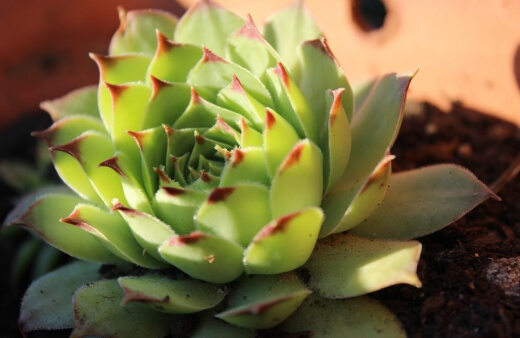
This echeveria’s leaves are a pale green and pointed with attractive red tips and outlines. Also known as the ‘Agave echeveria’ its blooms are red and lantern shaped with yellow tips on tall elegant stems.
Echeveria laui
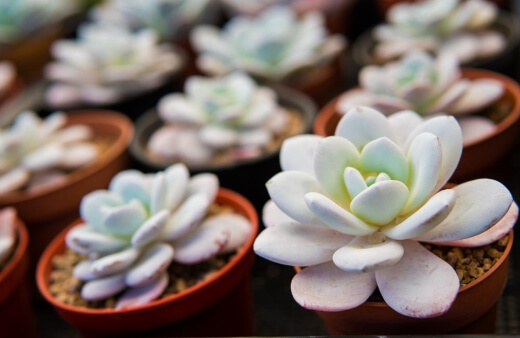
One of the most stunning echeverias, E. laui has no common name but is a very popular echeveria. Its chubby pale greenish white leaves can have a blushed pink tone in a tightly bunched form. Its flowers are a dusty pink with a peachy hue.
Ghost Echeveria (Echeveria lilacina)
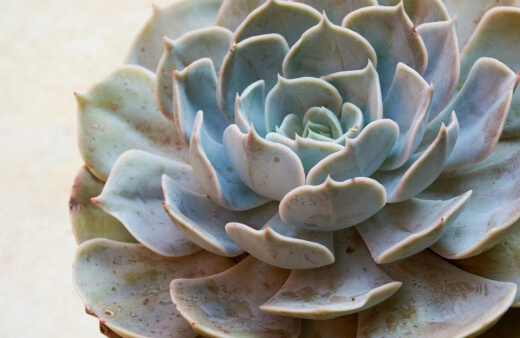
Commonly known as the ghost echeveria, its botanical name comes from its beautiful silvery-grey and lilac hue to its leaves which is more prominent during cooler months and a deeper purple in sunnier weather. Its blooms are soft coral on dusty pink stems.
Echeveria ‘Black Prince’
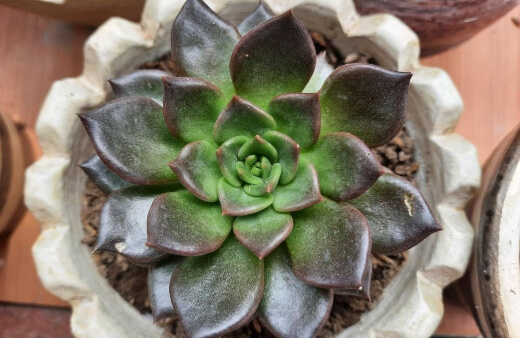
This is a show stopper and a firm favourite of mine, when mature Echeveria ‘Black Prince’ boasts deep dusty burgundy to black rosettes which are tinged green in the centre of the plant.
Echeveria ‘Black Prince’ is ideal for creating dynamic and contrasting container displays, this echeveria steals the show when it blooms with striking red flowers with a touch of green on the tips.
Pulido's Echeveria (Echeveria pulidonis)

Often referred to as Pulido's echeveria, E. pulidonis has powdery pale green leaves with attractive red edging. Its blooms are a pastel yellow making this a very colourful and cheerful addition to your echeveria collection.
Echeveria runyonii ‘Topsy Turvy’
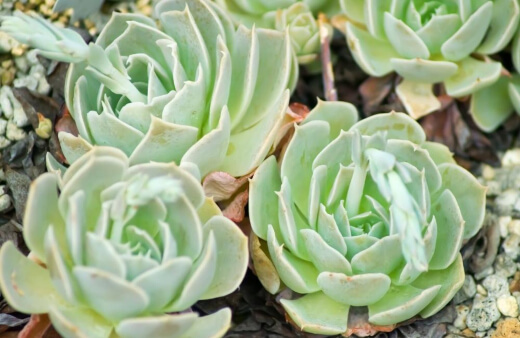
Echeveria runyonii ‘Topsy Turvy’ is such an unusual echeveria and its name ‘Topsy Turvy’ gives a bit of a clue to its form. Whereas most echeveria have slightly spoon shaped leaves, Echeveria ‘Topsy Turvy’ has broken the mould and turned that spoon shape upside down.
Echeveria ‘Topsy Turvy’ is another perfect candidate for a brilliant container display, its rosettes have an almost frilly look to them and its blooms are star shaped yellow and orange flowers.
Echeveria colorata
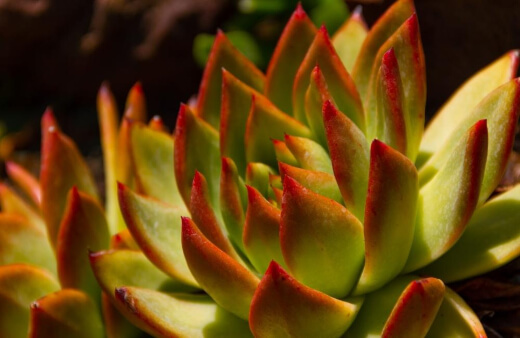
This is a perfect echeveria to start your collection with or for children to get involved in the growing process. E. colorata is productive parent plant so has been the source of a lot of hybridising, but it's a beautiful and reliable echeveria in its own right.
E. colorata has the classic glaucous leaf we love about echeverias but with the addition of blushed pink to red tips on each leaf. Its flowers are cheerful yellow with orange tips.
Echeveria ‘Lola’
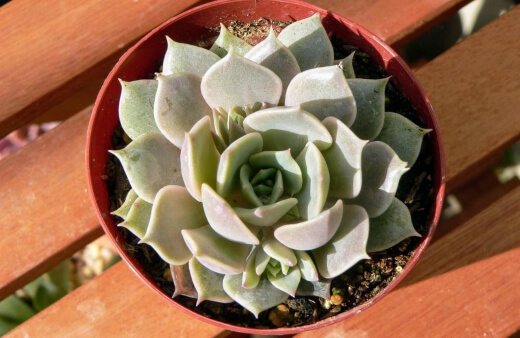
Echeveria ‘Lola’ is believed to be a cultivar of E. lilacina and has given many of its attractive qualities to Lola. It's dusty mint green leaves have a lilac pinkish hue in very hot or cold weather.
Echeveria ‘Lola’ is compact and its paddle shaped leaves are chubby and pointed, its form is symmetrical and mandala-like.
Echeveria peacockii
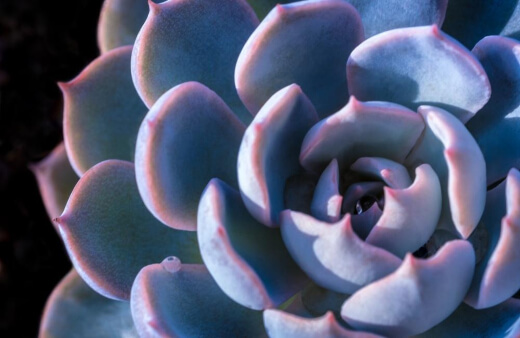
E. peacockii has pointed leaves and plenty of them, they are slightly spoon shaped and turned upwards like a lotus flower. The blue-grey leaves of E. peacockii are decorated with red edges which become more colourful in hot or cold weather with lantern shaped coral flowers.
Echeveria prolifica
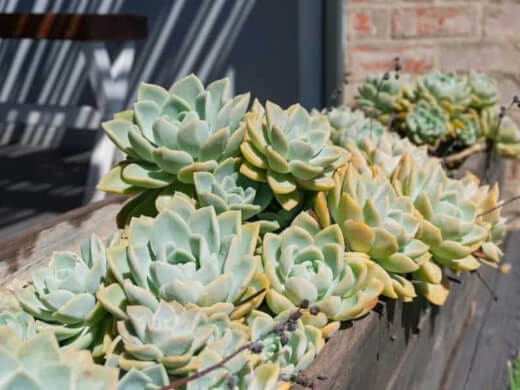
Source: sublimesucculents.com
If you're looking to add just one echeveria to your collection, maybe don't choose this one because you'll end up with tons. E. prolifica can make amazing ground cover plants in warmer climates as they will easily colonise any space.
The leaves are glaucous and you can expect to see pastel yellow coloured bell shaped blooms.
Echeveria ‘Morning Beauty’

Source: worldofsucculents.com
Echeveria subsessilis, also known as Echeveria ‘Morning Beauty’, has a similar appearance to E. peacockii with its gentle pale blue rosette, its flowers will bloom in yellow and orange shades.
Echeveria ‘Monroe’
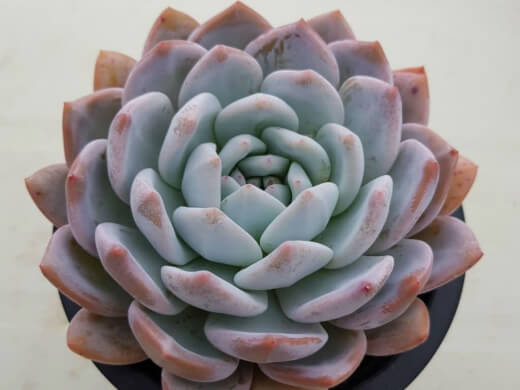
Source: julies-garden-emporium.com
Echeveria ‘Monroe’ has thick, ovate leaves of pastel blue-green blushed with pink that form a tight rosette. Its pastel pink stems hold coral pink bell shaped flowers, this is such a stunning echeveria to be part of your home decor.
Echeveria ‘Blue Metal’

Source: mvsg.com.au
Echeveria ‘Blue Metal’ shows truly striking colour in extreme temperatures or when stressed like most echeveria when it will turn to deep shades of purple and grey.
It has gorgeous striking red blooms which contrast beautifully with its deep coloured petals.
Echeveria ‘Chroma’
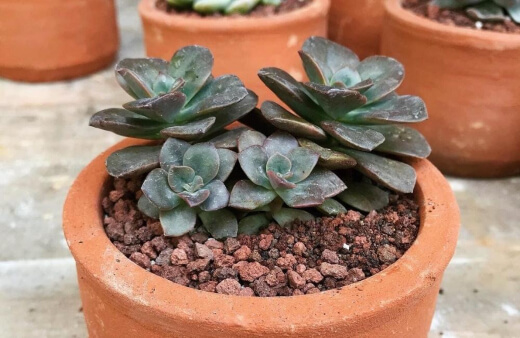
The shades of Echeveria ‘Chroma’ include blue, pink, purple, apricot, gold, and near-white which show just how popular and sought after this echeveria is. The flowers of Echeveria ‘Chroma’ will appear throughout the seasons so you'll always have interest with this echeveria.
Its form is stubby and shrubby and Echeveria ‘Chroma’ blooms with dusty yellow, orange, red, or pink bell-shape flowers on long stems.
Echeveria ‘Raindrop’

Echeveria ‘Raindrop’ is a truly unique space and one of my absolute favourites. As Echeveria ‘Raindrop’ matures, it develops gorgeous symmetrical bumps around the larger end of their leaves which look just like collected raindrop gems.
Its leaves are mostly a beautiful powder pale green which are tinted with a dusty red on the ends. Its blooms of are a pale orange on long dusty stems.
Echeveria purpusorum
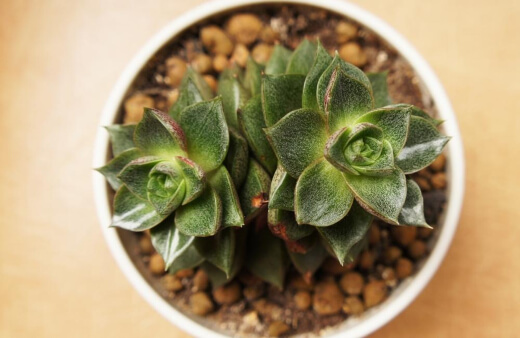
Also known as Urbinia, E. purpusorum is one of the slowest growing echeverias. Its rosette is small and tightly formed with usual powdery olive green coloured with greyish brown, speckled and mottled appearance.
Its leaves can be quite sharp and upward facing in their appearance almost like a small E. agavoides. When in flower, E. purpusorum will show bright red blooms with yellow tips.
Echeveria ‘Cubic Frost’

Echeveria ‘Cubic Frost’ is quirky and unique echeveria that is very similar to E. topsy turvy with pale lilac-pink unusual shaped fleshy leaves that taper in width.
Its form is symmetrical and round almost like a coral or sea urchin. Its blooms are orange and vibrant.
Echeveria ‘Black Knight’
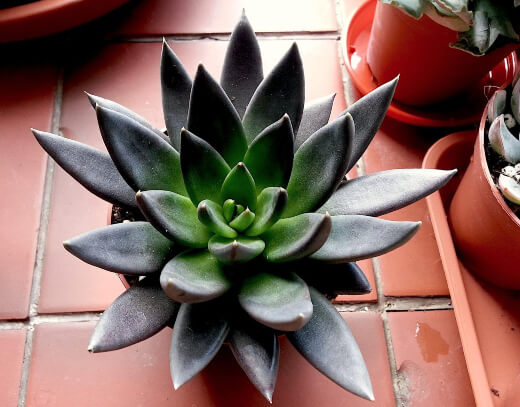
Source: plantswhitsunday.com.au
Echeveria ‘Black Knight’ has to be the most striking and darkest in colour echeveria that you can get your hands on. Its leaves are pointed and more elongated but truly deep in colour, this colour will be maintained in bright sunshine which all echeveria love to bask in.
Its blooms will be beautifully contrasted when its bright red flowers appear.
Mexican Snowball (Echeveria elegans) Also known as the Mexican Snowball, E. elegans produces white-ish-green rosettes of slightly spoon shaped and pointed leaves. Its blooms are lantern shaped pink hues with yellow tips. When grown in bright sun the leaves can get a pink blush on the tips. |  |
|---|---|
Molded Wax Agave (Echeveria agavoides) This echeveria’s leaves are a pale green and pointed with attractive red tips and outlines. Also known as the ‘Agave echeveria’ its blooms are red and lantern shaped with yellow tips on tall elegant stems. |  |
Echeveria laui One of the most stunning echeverias, E. laui has no common name but is a very popular echeveria. Its chubby pale greenish white leaves can have a blushed pink tone in a tightly bunched form. Its flowers are a dusty pink with a peachy hue. |  |
Ghost Echeveria (Echeveria lilacina) Commonly known as the ghost echeveria, its botanical name comes from its beautiful silvery-grey and lilac hue to its leaves which is more prominent during cooler months and a deeper purple in sunnier weather. Its blooms are soft coral on dusty pink stems. |  |
Echeveria ‘Black Prince’ This is a show stopper and a firm favourite of mine, when mature Echeveria ‘Black Prince’ boasts deep dusty burgundy to black rosettes which are tinged green in the centre of the plant. Echeveria ‘Black Prince’ is ideal for creating dynamic and contrasting container displays, this echeveria steals the show when it blooms with striking red flowers with a touch of green on the tips. |  |
Pulido's Echeveria (Echeveria pulidonis) Often referred to as Pulido's echeveria, E. pulidonis has powdery pale green leaves with attractive red edging. Its blooms are a pastel yellow making this a very colourful and cheerful addition to your echeveria collection. |  |
Echeveria runyonii ‘Topsy Turvy’ Echeveria runyonii ‘Topsy Turvy’ is such an unusual echeveria and its name ‘Topsy Turvy’ gives a bit of a clue to its form. Whereas most echeveria have slightly spoon shaped leaves, Echeveria ‘Topsy Turvy’ has broken the mould and turned that spoon shape upside down. Echeveria ‘Topsy Turvy’ is another perfect candidate for a brilliant container display, its rosettes have an almost frilly look to them and its blooms are star shaped yellow and orange flowers. |  |
Echeveria colorata This is a perfect echeveria to start your collection with or for children to get involved in the growing process. E. colorata is productive parent plant so has been the source of a lot of hybridising, but it's a beautiful and reliable echeveria in its own right. E. colorata has the classic glaucous leaf we love about echeverias but with the addition of blushed pink to red tips on each leaf. Its flowers are cheerful yellow with orange tips. |  |
Echeveria ‘Lola’ Echeveria ‘Lola’ is believed to be a cultivar of E. lilacina and has given many of its attractive qualities to Lola. It's dusty mint green leaves have a lilac pinkish hue in very hot or cold weather. Echeveria ‘Lola’ is compact and its paddle shaped leaves are chubby and pointed, its form is symmetrical and mandala-like. |  |
Echeveria peacockii E. peacockii has pointed leaves and plenty of them, they are slightly spoon shaped and turned upwards like a lotus flower. The blue-grey leaves of E. peacockii are decorated with red edges which become more colourful in hot or cold weather with lantern shaped coral flowers. |  |
Echeveria prolifica If you're looking to add just one echeveria to your collection, maybe don't choose this one because you'll end up with tons. E. prolifica can make amazing ground cover plants in warmer climates as they will easily colonise any space. The leaves are glaucous and you can expect to see pastel yellow coloured bell shaped blooms. |  Source: sublimesucculents.com |
Echeveria ‘Morning Beauty’ Echeveria subsessilis, also known as Echeveria ‘Morning Beauty’, has a similar appearance to E. peacockii with its gentle pale blue rosette, its flowers will bloom in yellow and orange shades. |  Source: worldofsucculents.com |
Echeveria ‘Monroe’ Echeveria ‘Monroe’ has thick, ovate leaves of pastel blue-green blushed with pink that form a tight rosette. Its pastel pink stems hold coral pink bell shaped flowers, this is such a stunning echeveria to be part of your home decor. |  Source: julies-garden-emporium.com |
Echeveria ‘Blue Metal’ Echeveria ‘Blue Metal’ shows truly striking colour in extreme temperatures or when stressed like most echeveria when it will turn to deep shades of purple and grey. It has gorgeous striking red blooms which contrast beautifully with its deep coloured petals. |  Source: mvsg.com.au |
Echeveria ‘Chroma’ The shades of Echeveria ‘Chroma’ include blue, pink, purple, apricot, gold, and near-white which show just how popular and sought after this echeveria is. The flowers of Echeveria ‘Chroma’ will appear throughout the seasons so you'll always have interest with this echeveria. Its form is stubby and shrubby and Echeveria ‘Chroma’ blooms with dusty yellow, orange, red, or pink bell-shape flowers on long stems. |  |
Echeveria ‘Raindrop’ Echeveria ‘Raindrop’ is a truly unique space and one of my absolute favourites. As Echeveria ‘Raindrop’ matures, it develops gorgeous symmetrical bumps around the larger end of their leaves which look just like collected raindrop gems. Its leaves are mostly a beautiful powder pale green which are tinted with a dusty red on the ends. Its blooms of are a pale orange on long dusty stems. |  |
Echeveria purpusorum Also known as Urbinia, E. purpusorum is one of the slowest growing echeverias. Its rosette is small and tightly formed with usual powdery olive green coloured with greyish brown, speckled and mottled appearance. Its leaves can be quite sharp and upward facing in their appearance almost like a small E. agavoides. When in flower, E. purpusorum will show bright red blooms with yellow tips. |  |
Echeveria ‘Cubic Frost’ Echeveria ‘Cubic Frost’ is quirky and unique echeveria that is very similar to E. topsy turvy with pale lilac-pink unusual shaped fleshy leaves that taper in width. Its form is symmetrical and round almost like a coral or sea urchin. Its blooms are orange and vibrant. |  |
Echeveria ‘Black Knight’ Echeveria ‘Black Knight’ has to be the most striking and darkest in colour echeveria that you can get your hands on. Its leaves are pointed and more elongated but truly deep in colour, this colour will be maintained in bright sunshine which all echeveria love to bask in. Its blooms will be beautifully contrasted when its bright red flowers appear. |  Source: plantswhitsunday.com.au |
How to Grow Echeverias
We've touched on just how low maintenance these plants can be, but just in case you have the death touch when it comes to all plants, here are some helpful tips on how to keep your plant happy and healthy.
Growing Echeveria Indoors
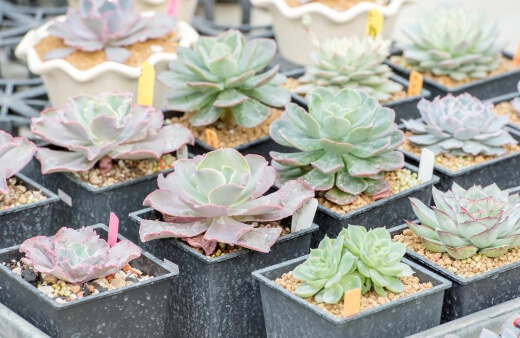
Best Soil for Indoor Growing
The most important element to get thighs for your echeveria is drainage. An echeveria that's allowed to sit in wet soil is a recipe for disaster. Your plant will thrive in a free draining, gritty, even rocky potting mix alongside being housed in a pot with decent sized drainage holes.
Indoor Light Requirements
Echeveria loves bright light, so don't worry about placing it too close to a bright window. Remember these plants have built in mechanisms to cope with bright sunshine - their farina sunscreen.
However if you're unable to provide enough light for your plant indoors it would benefit from spending the warmer summer months outside to soak up the rays.
Watering Echeveria
If there's one thing that your plant doesn't need, it's lots and lots of water. Echeveria are incredible at conserving water but this doesn't mean that you shouldn't regularly check and give them a drink if they need it.
Waiting until the top couple of inches of soil are dry before watering, and use the finger test to make sure. Another sign that your plant might need a drink is puckering of the normally plump leaves.
What Fertiliser to Use
Generally, echeveria aren't greedy feeders and don't need to be fertilised, however during the growing season a well diluted cacti and succulent feed will benefit your plant especially when growing indoors.
Repotting Echeveria
When growing in their natural habitat, echeveria will happily grow in the tightest of spaces so re-potting doesn't need to be a regular exercise. If your plant has become fully root bound in its current pot and you can see visible roots poking out of the bottom of the pot it's definitely ready to be potted on.
Growing Echeveria Outdoors
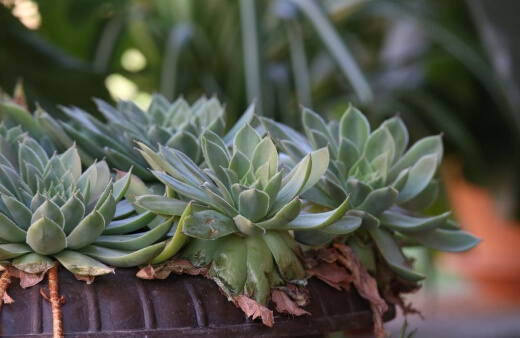
Best Soil for Outdoor Growing
Your echeveria will happily grow outdoors with adequate protection all through the year. The best way to ensure your plant will last through the winter is to plant into free draining soil in pots.
Echeveria do prefer a slightly acidic soil but the most important element is that your pot has large drainage holes and a very free draining, gritty potting mix.
Watering Echeveria
There is no need to water your echeveria if it's growing outside, it should get all the water it needs without any supplementary watering. They are adapted to drought conditions but if you notice that your plant has any wrinkly leaves during any dry spells it can't hurt to give it an extra drink.
Echeveria can survive in low temperatures but they won't last long if left in cold wet soil so during the winter protect your plants from very damp and cold conditions.
Propagating Echeveria
Propagating echeveria couldn't be easier, in fact they'll do it for you!
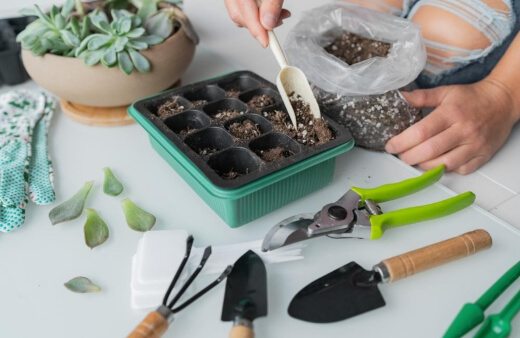
Pups
These little baby plants known as pups will pop up during the growing season and can be carefully teased out and potted up separately into their own free-draining potting mix. If your plant is producing pups it shows that it is happy and healthy, excellent work!
Leaf Cuttings
During spring or summer simply parting a leaf from your plant and placing the wound side down into soil will eventually grow new plants. If you find any leaves that have fallen off your echeveria oftentimes these can also be used to propagate from, unless the leaf has fallen off due to ill health or has been damaged.
Seed
Yes believe it or not you can save seed from your plant and grow new plants from seed. This form of propagation is a little more work than anything else involved in your echeveria care book but worth the very small amount of effort involved.
You'll need to pollinate your echeveria yourself using a small paintbrush and this will only produce true seed on plants being grown indoors. Once your plant is in bloom, tickling the inside of the flower will transfer pollen and pollinate your flower, the next step is collecting the seed.
Your pollinated echeveria flower will need to look thoroughly spent and have dried out completely before removing the flower collecting the seed.
Using a white piece of paper, gently remove the flower petals and sepals and rub the seeds onto the paper, they will be very tiny so the white paper is a must. Your echeveria seeds are now ready to be sown.
Echeveria Common Pests and Problems
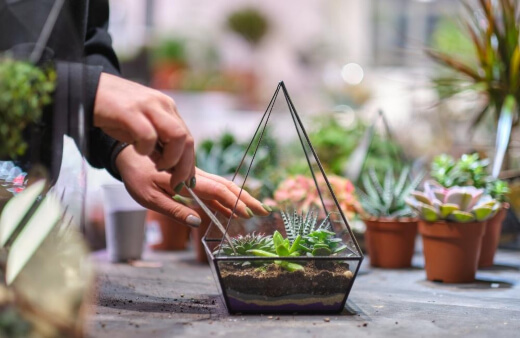
Generally, echeveria pests aren't a problem, especially when growing outdoors in your garden or outdoor space. However when growing indoors, your plant may come across some typical houseplant pests which, with proper care and dutiful attention, can easily be tackled and resolved.
You may come across spider mites which are extremely small and will produce webbing on parts of your plant.
Fungus gnats are another pest which can be a houseplant plague, you'll notice the small adult flies which lay their eggs in your soil, and these are what can harm your house plants.
My personal arch enemy is the mealy bug. These will colonise your houseplant collection with devastating results. Mealy bugs are small, white and fluffy looking, they sound cute really but they're the embodiment of evil.
However to my amazement they have never touched any of my echeveria house plants, yet, but this may be due to having very rich pickings elsewhere.
All of these pests can be treated with a variety of things however I wouldn't recommend any of these to use on your echeveria. Using pesticides or harsh chemicals will harm your echeveria’s beautiful farina.
I would suggest removing any pests with a harsh blast of water directed away from the soil to dislodge any creepy crawlies and keeping a close watch on them in the future.
If this still doesn't help, using insecticidal soap and neem oil mixtures should help control the problem, but this will potentially harm your echeveria’s natural and beautiful waxy coating.
Root Rot
Echeveria can't handle too much water and a sure sign that your plant has root rot will be a mushy and black stem travelling upwards.
Fungal Problems
Fungal problems in your echeveria can manifest on all parts of the plant and the most probable cause is high humidity. Most house plants thrive in high humidity conditions but echeverias aren't one of them, they need the air to be dry.
Too much moisture in the air will mean that your succulents can't regulate their water intake normally.
Lack of Light Effects
If your plant has insufficient light levels it will grow leggy and deformed, most likely with smaller leaves and lose its compact form. Your plant is searching for light and using all its energy to do so.
The good news is that a lot of these problems can be rectified and this involves a good old-fashioned beheading. Technically speaking this could also be a form of propagation which may seem drastic but it's a perfectly safe and common way to help your plant
If your echeveria has become leggy due to lack of light, chopping off the top part of the plant making sure to keep a good length of stem to bury in new soil should root well, and the stump should also regrow too, now make sure they're positioned in a brighter home.
As for root rot or fungal infections, rooting any part of your echeveria that is healthy can still work as long as you keep your cutting equipment clean and providing there is enough healthy plant to use.
You will need reliable pruning shears for your echeveria so be sure to check our product reviews and buying guide for the best secateurs available online.
Protecting Farina

Let's take a moment to talk about that waxy coating known as farina and why it's important to protect it. This special coating is how your echeveria has evolved to be the tough plant it is today, the farina protects the plant from pathogens, harsh sun, insects and even our grubby hands!
Yes, as much as you want to touch your gorgeously glaucous echeveria, our skin has oils that can damage its farina and break it down. If your plant loses too much of its protective farina it will lose its pastel colouring and open itself up to dangers that it may otherwise be able to easily tolerate.
Once your plant has lost its farina coating it's unlikely that it will re-coat itself, but don't worry this doesn't mean that your plant will die.
The farina is hydrophobic so repels water, you'll need to be vigilant to not overwater and not get any of the leaves wet as any sitting water will cause rot and fungal problems.
Echeveria Frequently Asked Questions
Do echeveria die after flowering?
Echeveria are not monocarpic plants. People think that they are monocarpic (meaning they will die after flowering) but this isn't the case, in fact, many varieties of echeveria will flower several times in a single year.
Is echeveria hard to grow?
Echeveria are one of the easiest houseplants to grow, and have almost no high maintenance requirements. They can be slightly needy when it comes to finding the right light levels for them, but they respond to changing light quickly so you can experiment with them until you find the right place.
How fast does echeveria grow?
Echeveria can grow incredibly quickly in the right conditions, expanding by up to 8 inches in a single year, but most cultivars sold in garden centres or online are slower growing, so don’t need repotting quite as regularly.
Are echeveria indoor or outdoor?
They are well suited for either outdoor or indoor growing in most climates making it perfect as an indoor plant, but they do not tolerate frost or prolonged cold and damp temperatures, so should always be brought indoors over winter.
In warm dry climates with mild winters, they can do well in gravel gardens as long as the drainage is good and they’re in full sun over winter.
Are you a big fan of succulents? If you are, you will love our list of the best succulents to grow in Australia.
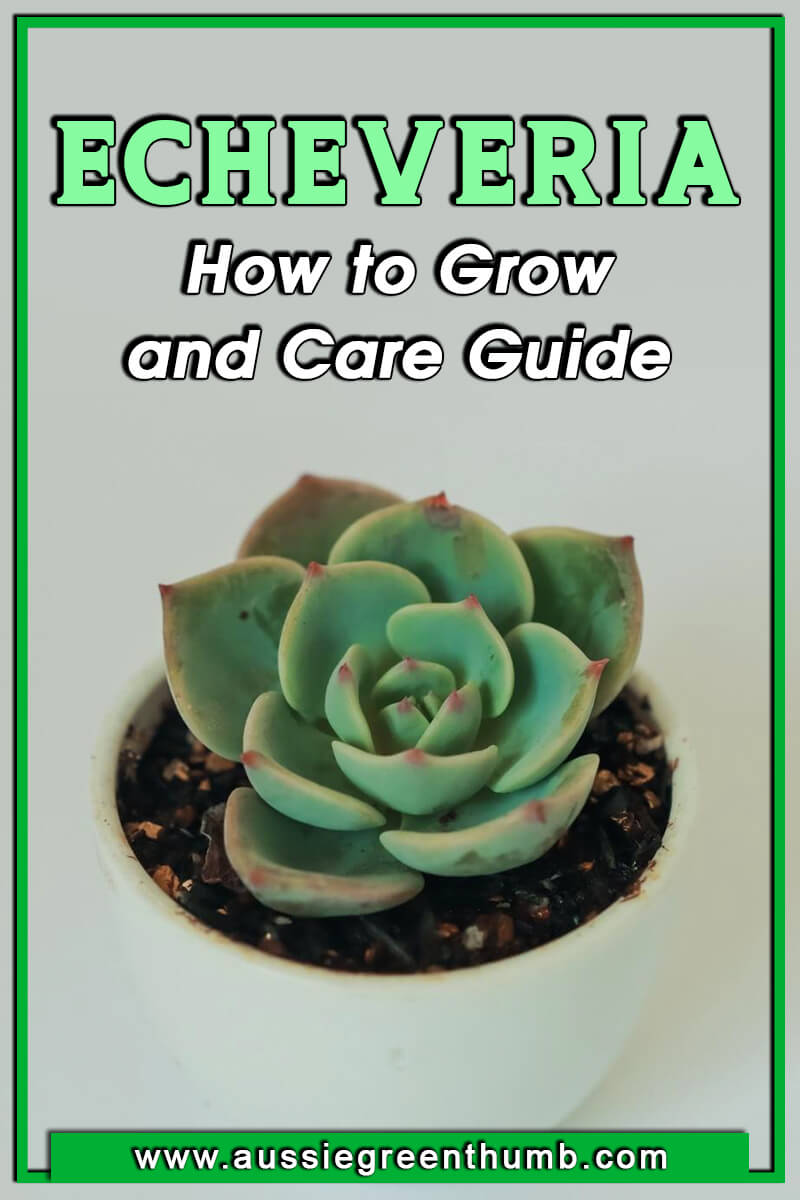
Elevate Your Garden with the Understated Beauty of Echeveria
Like I said at the start, echeveria are plants that will forgive you for some serious neglect. But now you know how to grow echeveria just go out and buy one. They’re beautiful plants with an alien appeal and a mesmerizingly calming influence in the home or garden. We love them, and I hope you will too!
Thanks for reading our ultimate guide to growing echeveria in Australia.
Published on February 24, 2022 by Maisie Blevins
Last Updated on February 12, 2024




